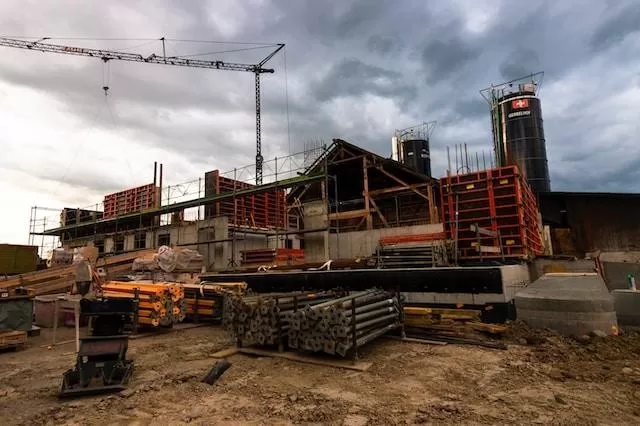Businesses contribute significantly to environmental degradation, with studies showing they generate over 70% of carbon emissions. As concerns about climate change rise, adopting sustainable practices has become essential not only for the planet but also for the long-term viability of businesses.
This article outlines practical steps for companies to become more eco-friendly and sustainable.
Reduce Waste and Embrace Recycling
Implement a Robust Recycling Program
Recycling is a simple yet powerful way to reduce waste. Businesses should establish a recycling program focusing on various materials, including paper, plastics, and metals. Proper disposal methods are vital:
- Paper: Create bins specifically for paper waste.
- Plastics: Separate recyclable plastics from trash.
- Metals: Set up collection points for metal recycling.
Companies like Dell have successfully implemented recycling programs, reducing waste by over 80%, setting a strong example for others.
Minimize Packaging and Opt for Sustainable Alternatives
Excessive packaging contributes massively to waste. Businesses can reduce packaging by opting for biodegradable materials, reusable containers, and innovative designs. For example, Unilever has committed to making all its packaging recyclable or reusable by 2025. Research indicates that packaging waste accounts for about 30% of total waste, highlighting the need for sustainable alternatives.
RELATED: How Can I Get Custom Packaging for My Product?
Compost Food Waste
Composting is an effective way to manage food waste. This process not only reduces landfill contributions but also produces nutrient-rich soil. Businesses with cafeterias can set up composting systems. Companies like Google have successfully implemented composting practices, turning food scraps into valuable compost instead of trash.
RELATED: 6 Trends You Need to Know About Fast Food Packaging
Optimize Energy Consumption
Switch to Renewable Energy Sources
Renewable energy sources, such as solar and wind, significantly decrease carbon footprints. Companies like IKEA have embraced these technologies, running their operations on 100% renewable energy. This shift not only helps the environment but can also lower energy costs over time.
Improve Energy Efficiency
Simple changes can lead to substantial energy savings. Options include:
- Switching to LED lighting.
- Optimizing HVAC systems for better performance.
- Using energy-efficient appliances.
According to the EPA, businesses can save up to 30% on energy bills through efficiency upgrades.
Implement Energy Monitoring and Management Systems
Monitoring energy use allows businesses to identify inefficiencies. Smart meters and energy management systems can track consumption patterns, enabling companies to make informed decisions and cut energy waste.
Conserve Water Resources
Install Low-Flow Fixtures
Low-flow toilets, faucets, and showerheads can dramatically reduce water consumption. Studies show that using low-flow fixtures can cut water use by about 30%. This is a straightforward way for businesses to be more eco-friendly.
Implement Water-Saving Technologies
Innovative technologies like rainwater harvesting and greywater recycling can enhance water conservation. Businesses like The Bullitt Center in Seattle use greywater systems to reuse water for irrigation, showcasing the impact this technology can have.
Educate Employees on Water Conservation
Employee engagement is crucial for effective water conservation. Educating staff about best practices and the importance of water-saving measures fosters a culture of sustainability within the workplace.
RELATED: Sustainable Home Improvement: Waste Management and Eco-friendly Practices
Choose Sustainable Sourcing and Supply Chains
Partner with Ethical and Sustainable Suppliers
Choosing suppliers with eco-friendly practices strengthens sustainable efforts. Firms should research potential partners to ensure they align with their environmental goals.
Prioritize Locally Sourced Materials
Sourcing materials locally reduces transportation emissions, thus lowering carbon footprints. In fact, products transported over long distances contribute significantly to overall emissions. Companies like Patagonia prioritize local sourcing, enhancing their sustainability while supporting local economies.
Implement a Circular Economy Model
The circular economy model focuses on reusing and recycling materials to create a sustainable supply chain. Businesses can benefit from this model by minimizing waste and creating value from discarded resources. Experts recommend integrating these practices for enhanced sustainability.
Engage Employees and Customers in Sustainability Initiatives
Promote Eco-Friendly Practices Internally
Encouraging employees to adopt sustainable habits—like reducing paper use or carpooling—can yield significant benefits. Creating incentive programs or recognition can motivate staff to engage.
Engage Customers in Your Sustainability Journey
Transparent communication about sustainability initiatives builds trust. Sharing stories of eco-friendly practices through marketing materials can encourage customer participation. Companies like Starbucks and Zintego involve customers by promoting reusable cups and offering discounts for their use.
Partner with Environmental Organizations
Collaborating with environmental organizations boosts credibility and can enhance sustainability efforts. Businesses gain access to resources, expertise, and a platform for joint initiatives.
Conclusion
Making your business eco-friendly and sustainable is not just beneficial for the environment; it also enhances your brand’s reputation and can lead to cost savings. By implementing recycling programs, optimizing energy use, conserving water, and engaging employees and customers, organizations can make a meaningful impact.
Start by adopting at least one of these actions today—every small effort counts toward a more sustainable future.
FAQs
There are several simple steps you can take to make your business more eco-friendly, such as implementing a robust recycling program, minimizing packaging, composting food waste, switching to renewable energy sources, conserving water, and choosing sustainable suppliers. Start with one action and gradually incorporate more sustainable practices over time!
You can reduce waste by setting up a recycling program that includes proper disposal methods for paper, plastics, and metals. Additionally, minimizing packaging and opting for biodegradable materials can significantly cut down on waste. Composting food waste is another effective strategy to manage waste sustainably.
Renewable energy sources, like solar and wind, are sustainable alternatives to fossil fuels. By switching to renewable energy, you can significantly reduce your carbon footprint and potentially lower your energy costs in the long run. Companies like IKEA have successfully made this transition, showcasing the benefits of using 100% renewable energy.
You can promote eco-friendly practices internally by educating employees about the importance of sustainability and offering incentives for adopting sustainable habits, such as reducing paper use or carpooling. Creating a culture of sustainability encourages staff to engage actively in your company’s eco-friendly initiatives.
Sourcing materials locally reduces transportation emissions, which can significantly lower your business’s overall carbon footprint. By prioritizing local sourcing, you also support local economies and can build stronger relationships with suppliers. Companies like Patagonia exemplify this practice by focusing on local materials.
A circular economy model emphasizes reusing and recycling materials to minimize waste and create a sustainable supply chain. By integrating this model into your business practices, you can reduce waste, lower costs, and create value from discarded resources, ultimately enhancing your sustainability efforts.












